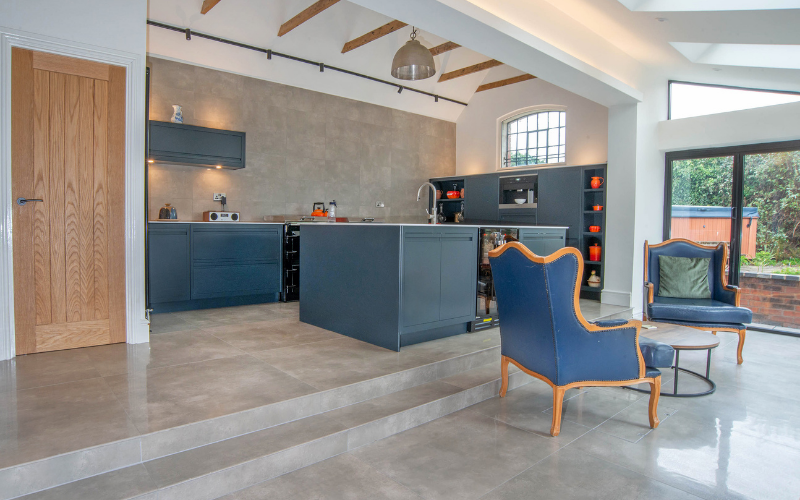How to Create a Light-Filled Kitchen
When designing a new space, most homeowners are focused on creating additional space. Whilst this is a key consideration for us as architects, we’ll also be looking at ways to maximise the amount of natural light entering the space as this will truly enhance how you feel when spending time in your home.
Natural light is something we place great importance on in architecture. A light filled space is not only a daily mood booster but it’s also energy efficient. When designing a kitchen, we’ll therefore be looking at ways to add as much light as possible, whilst ensuring that extending the space won’t block natural light from the existing parts of the house.
Here’s our top tips to help create a kitchen space that is open, airy and inviting.
1 – Plan the kitchen layout for maximum sunlight
First things first, focus on getting the orientation and layout right. South-facing kitchens enjoy all day-sunlight, whilst east-facing kitchens will benefit from sunlight in the morning, making them the ideal candidate for a sunny breakfast area.
Consider how the sun moves throughout the room during the day, and plan the layout accordingly. Top tip – avoid placing tall cabinets or walls in a position where they’ll block incoming light.
2 – Consider roof lights and ceiling glazing
Bringing in light from the ceiling, either through roof lights or ceiling glazing, is one of the best ways to add natural light into a space, but it works particularly well in the kitchen where wall space is at a premium.
If you’re adding a rear extension, consider positioning a roof light at the junction between the old and new area to provide natural light to the middle rooms.
3 – Patio doors
There’s a reason that the large majority of our kitchen projects include patio doors! Not only do they create an instant connection between the indoor and outdoor areas, but they also flood the room with natural light.
It can mean sacrificing wall space, which can be tricky when designing the layout of a kitchen, but they really do add to that sense of openness.
4 – Use reflective and light-colored materials
In addition to the layout of the kitchen and the types of glazing you use, the types of materials you use within the kitchen can have a huge impact on how light the space feels.
When choosing flooring, kitchen cabinetry and other finishes, choose something within a lighter colour palette. You can also incorporate design elements to bounce light back into the room, such as mirrors and high gloss finishes.
5 – Open plan kitchens
Everyone loves an open plan kitchen, but nobody more so than an architect because they are great for flooding an area with natural light.
If it isn’t possible to fully open out the kitchen, consider using glass partitions or partial walls.
6 – Plan your storage solutions
When designing the kitchen, remember that heavy wall cabinets can enclose a space and cast shadows. To achieve a light and airy feel consider using base units with open shelving. If you want to incorporate wall units, consider a lighter colour palette, and always avoid placing tall cabinets either side of a window as they will impact the amount of light coming in and filtering into your kitchen space.
7 – Plan your lighting and incorporate layered lighting
Ensuring a good amount of natural light is a priority, but you also need to carefully consider and plan your lighting strategy to account for those darker months and short winter days.
Try to plan it so that each area is illuminated for the desired effect. This could include task lighting in the kitchen, a statement pendant where dining takes place. Ambient lighting that is dimmable will also prove beneficial and will help to create the right atmosphere when relaxing or socialising with friends and family.
As with all lighting, it’s important to make decisions as early into the process as possible so the builder and electrician can organise wiring and position switches accordingly.
8 – Ensure adequate ventilation
As with all building projects, make sure you consider ventilation in your new space to avoid humid interiors and overheating – particularly if you do benefit from that south facing position. .
Conclusion
Working with natural light and being conscious of how to incorporate it when designing your kitchen space can truly transform the space, but it needs careful planning from the outset of the project.
As architects, we can help you design a light and bright family kitchen extension, please get in touch to see how we can help.






